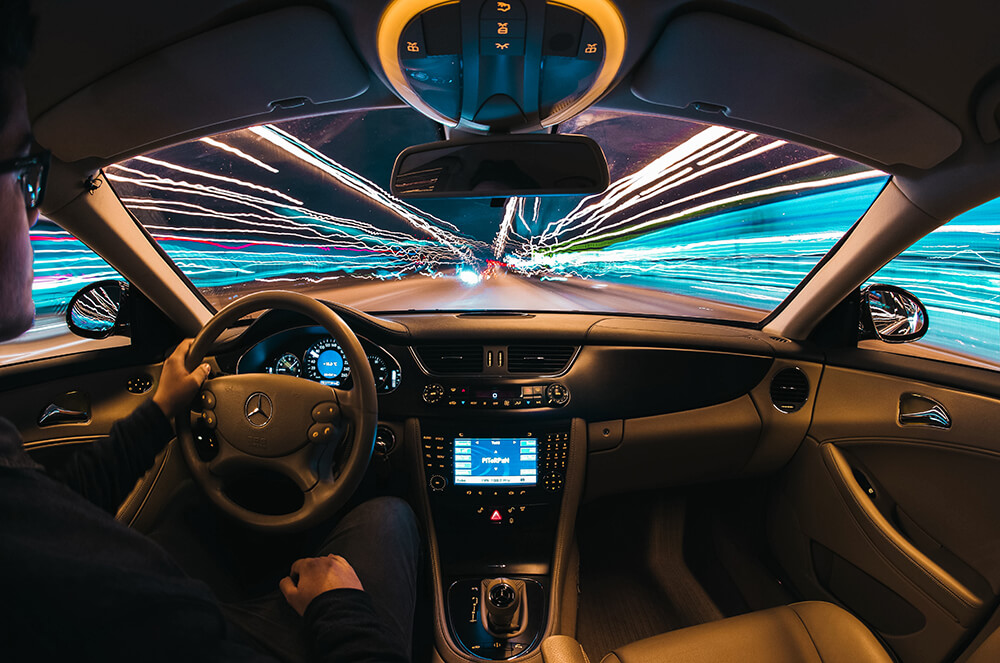For those just now stepping into the world of automotive technology, the phrase “advanced driver-assistance systems”—also known as ADAS—may seem a bit daunting. With all the new tech appearing in cars, you’ve probably wondered what all these cameras, sensors and automated systems have to do with your car. Odds are, if your car is drivable and isn’t a restored classic model, ADAS are a major part of what make it easy to drive. In essence, ADAS are any technologies that assist the driver by reducing the risk of human error.
ADAS became especially popular in the ‘90s, starting in luxury cars and working their way into more and more vehicles in the form of backup cameras, onboard navigation, warning sensors and speed controls. Today, nearly all models created after 2005 feature some level of automation, and cars are only getting smarter. Often described as “computers on wheels,” the average vehicle is projected to have more than 200 sensors by 2020 – bringing it much closer to the mythical driverless car.
Which ADAS are on the roads today? A wide variety. Chances are, you’ve been using these systems for years and just haven’t realized it. Below is a brief description of the most common systems in cars today.
ACC – ADAPTIVE CRUISE CONTROL:
Cameras and sensors detect the speed and position of the vehicle in front of you to adjust your vehicle’s speed accordingly.
AFLS – ADAPTIVE FRONT LIGHTING SYSTEM:
Sensors and controls detect when your vehicle is turning and shift your headlights in the direction of the turn.
AHBC – ADAPTIVE HIGH BEAM CONTROL
Even more advanced than the automated headlights that detect surrounding light levels to turn headlights on or off, these sensors detect oncoming headlights to turn highbeams on and off accordingly.
AEB – AUTOMATIC EMERGENCY BRAKING
Sensors and cameras detect objects and predict collisions to automatically stop your vehicle.
BSW – BLIND SPOT WARNING
When an object is in your blind spot, a light will turn on to warn you. In some cars, sensors will prevent your steering wheel from turning when it detects an object.
LKA – LANE KEEP ASSIST
If you begin to leave your lane without using your signal, this system detects the accidental swerve and notifies you through a light, sound or nudge on the steering wheel.
RVC – REAR VIEW CAMERA
Rear view cameras—one of the most common ADAS—are now required in all models 2018 or newer. These cameras detect surroundings behind your car and give you a warning when something is in your path. Basic cameras show you your immediate line of sight, while others can provide back-up guidance, object detection and even automatic steering.
In addition to these common systems, ADAS are becoming more capable of detecting virtually anything from pedestrians to wrong-way signs. They can now assist with highway driving, parking and everything in between. All of these systems work to eliminate human error and ultimately, keep drivers safe on the road. As technology continues to advance, our team of technicians is here to keep up with the industry’s latest trends and keep your car in perfect, calibrated condition. Leaning into the future of ADAS is just one of the ways our Protech team works to give lives the all clear.
